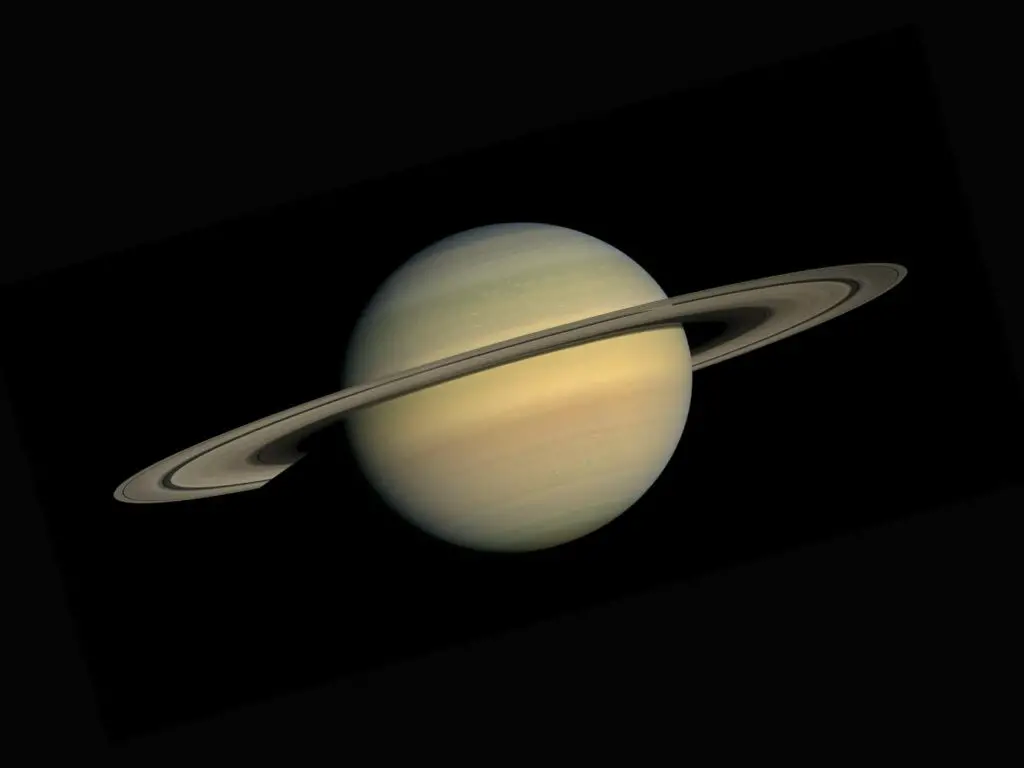
Even if all you have is a basic telescope, Saturn is one of the best celestial objects you can find in the night sky. If you wish to embark on a journey and spot Saturn in your telescope, look no further!
Read on for a comprehensive guide and some handy tips we can use to find Saturn in 2022 using your telescope.
Where Can We Find Saturn In 2022?
To know this accurately, you need to know when the planets are in opposition or conjunction. More on this later, as we are going to dive deeper into a month-by-month calendar to know when we can observe Saturn.
January
Saturn is normally near Mercury during the middle of January. We can find it during the start of January but by the 20th, we will lose Saturn. During this time, Saturn is an evening planet and can be seen quite clearly with even a basic telescope.
February
It gets hard to see Saturn in February even if you use a powerful telescope or a pair of binoculars. This is because Saturn lines up with the Sun at the start of February (around February 4). This makes it hard to find the planet although it is visible better in the next month.
March
In March, Saturn is visible better as compared to February but is still not very clearly seen. It is a poorly positioned morning planet and ends up near Venus or Mars. By the end of March, it is near the crescent Moon.
April
We have better luck in April, as Saturn becomes a morning object. We can spot Saturn as it doesn’t gain much height and Mars is just 19 arcminutes away at the start of April. This makes it easier to find Saturn if you look close to Mars and own a powerful telescope that can detect minute objects.
May
In May, we can spot it by the waning gibbous moon around May 22. Saturn becomes a low-altitude morning object and we can spot Saturn in a telescope with ease.
June
Things are getting better now. Saturn becomes a morning planet and is near the waning gibbous Moon. We can spot it around June 18 and 19. Try to enhance your chances by spotting it between June 18 and 19, preferably in the morning.
July
Saturn becomes an improving morning planet and is near the bright gibbous moon. We can spot the celestial object around July 15 and 16 in the bright hours of the morning.
August
This is where things get tricky. Saturn begins its opposition from around August 14 and reaches an altitude of 21o. If you happen to be near the center of the United Kingdom at this time, you can easily spot Saturn during the middle of August.
September
Saturn is a well-positioned planet and can be seen clearly around September 7 and 8. This is because it is close to the bright waxing gibbous moon. We can maximize our chances of spotting Saturn by checking in the evenings. If we try to spot Saturn in a telescope during the afternoon or later in the night, we might miss it.
October
This month is confusing, as Saturn begins as a well-placed planet at the start of October but slowly loses its altitude by the end. As the month keeps progressing, it gets closer to the bright waxing gibbous moon and is seen during the evening of October 5.
November
During this month as well, Saturn loses its altitude by the end of November. It starts as a bright and well-placed planet on November 1. Hence, the best time to spot it is close to the waxing moon around November 1 and 29. Any time after that would yield no results.
December
This is the best month to spot Saturn, as it is lit by the waxing crescent moon by almost 15%. It is an evening planet during this period but is past its best. Try spotting it around December 26 and keep checking once it’s past December 23.
What Do Conjunction And Opposition Mean?
Let’s keep things simple. A conjunction is when objects are together on the same side of the Earth and opposition is when they are on opposite sides. Two planets link up on the same side when they are in conjunction and separate in opposite directions when they are in opposition.
An example would be when the Earth is in between the Sun and Saturn. This means that Saturn is in opposition during this time. When the Earth moves behind the Sun, Saturn comes into conjunction. The same goes for any other planet in the solar system. It is interesting to note how this impacts both astronomy and astrology.
Spotting The Rings Of Saturn Using A Telescope
Saturn is unique owing to its rings and their complex structure. If we stay patient, we can spot the two rings of Saturn and the large gap between them. Each ring has a different brightness and this is called the Cassini division.
Your luck depends entirely on the steadiness of the sky and how powerful our telescope is. This way, we can easily spot the 3D effect caused by the darkened edges of Saturn’s disk. It is easy to spot before and after Saturn’s opposition when the rings cast shadows on the planet.
Did you know that before and after opposition, the rings shine a bit brighter around Saturn? This is due to a phenomenon called the Seeliger effect, which causes the disappearance of the shadows on the rings made by small particles of ice. Or rather, it causes a temporary disappearance from our viewpoint.
This is also a convenient time to observe Saturn’s Moons. Titan, the largest one can be seen clearly and is found to be very bright. We can even spot the dense yellow clouds around the Moons if we use a 6-inch or larger telescope. Be informed that it gets hard to differentiate between the various moons.
Some Interesting Tips To Observe Saturn Using A Telescope Or Binoculars
Saturn often gets frustrating to observe due to the small visual image available. If the atmosphere is unsteady, it gets hard to observe the rings and clouds as well. Even if we use binoculars of 10-12x, we can only spot a tiny point (Titan) and a small disk (Saturn) in the sky. Is it better to find Saturn in a telescope?
With a telescope, we can use filters and refractors to gain better quality images of the planets. We can use collimated reflectors to reduce the contrast and increase the aperture. Ultimately, stargazers can view the planets with a better resolution by resorting to better telescopes and other equipment.
Keep your telescope at an ambient temperature and ensure that its view isn’t degraded by eddies of air. Give the telescope enough time to settle down (at least 20 minutes) and ensure you have the right mirrors and lenses.
25x Eyepiece
With a low-power eyepiece, we can observe Saturn as a non-circular disk and make out some of Saturn’s rings. We gain a basic image of the planet. In other words, it is sufficient to make out that something exists at that point and could be Saturn due to its shape.
50x Eyepiece
With a higher power eyepiece, we can spot the rings of Saturn. We can also make out the planet’s disk and how the rings are placed around it.
100x Eyepiece
This will make the image look faded and blurry. But keep enhancing the magnification until the image becomes very faint. Try to identify the best size, brightness, and sharpness of the image that you wish to see. This will help determine how much you need to magnify it.
300x Eyepiece
At times, if we choose a 300x eyepiece, we can gain the best view of the planet and notice a lot of finer details. Be patient and observe every inch of the planet that is visible to you. You will notice that the planet is small but has a lot of details. You might even notice the yellow clouds and rings around the planet.
Frequently Asked Questions
How Often Can We Observe Saturn’s Full Range Of Faces?
If we are lucky, we can spot it twice in our adult lives. This is a rare phenomenon and the view of Saturn keeps changing after every revolution around the Sun. Trust us, it is a unique experience and you must await the opposition to get a glimpse.
Can I Observe Saturn In February?
February is one of the few months when Saturn is completely not visible despite using a very powerful telescope. Since it aligns with the Sun, it becomes too faint to be spotted and stargazers might find it hard to even notice a tiny point in the sky.
Is Saturn Visible Better During Opposition Or Conjunction?
During opposition, we can spot Saturn and also its rings. If we are patient and look closely, we can even see the shadows the rings make on the planet due to tiny ice particles. It is also possible to observe the large space between the rings, the difference in brightness of the rings, and the yellow clouds that cover Saturn’s moons.
Summing Up
Saturn is undoubtedly a fascinating yet frustrating planet to spot. It is rare to find it in full view and to spot Saturn in the telescope, you will have to have very good eyepieces and filters.
With the given month-wise list of when and where you can find Saturn, you can easily begin looking where there is hope. But bear in mind that this is a unique phenomenon and you cannot expect to see a high-quality image immediately.
Keep exploring, keep trying, and never stop trying to broaden what we know about our solar system and celestial bodies!
